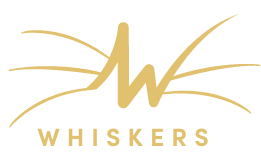A postoperative care & exercise regime is very important for fracture patients.
Week 1
The first post op check is performed between 2 and 4 days postoperatively. The incision site may be swollen and tender and sometimes the patient will not want to put any weight on it at all at this early stage. It is important that all patients have STRICT REST. This includes no running, jumping, climbing the stairs or playing. Toilet trips are controlled by a short lead walk to limit too much movement. One can also use a belly sling for extra support if they struggle at first.
Prevention from licking the surgical site is important to prevent infection and delayed healing. Licking is most commonly controlled via the use of a buster collar. It is often recommended to cold compress the surgical site to prevent swelling and help with pain relief. This can be made quite simply from the use of a bag of frozen peas wrapped in a towel for 5-10 minutes, 2-3 times daily. Cold compresses help to reduce the pain and swelling associated with the surgery. This can be switched to a warm compress from Day 5 onwards, if the incision site is clean and dry. Use a hot water bottle wrapped in a towel – this should only be warm to the touch, not too hot.
Arrange a second post operation check between day 7 and 10 postoperatively.
Weeks 2-4
The swelling should settle down by this point and your pet will gradually become more confident with the leg. Exercise should still be strictly limited – with 5 minutes on a short lead, very slowly, once or twice a day. You still need to prevent your dog from running, jumping or climbing the stairs. It is very important that you do not allow your pet to overdo it, as they will feel much more comfortable than preoperatively, but the bone will not be fully healed for at least 8 weeks. It is frustrating but it is worth being patient at this stage.
Weeks 4-8
You should see your vet at 4 weeks and 6 weeks, and you should arrange for them to x-ray the leg at 8 weeks postoperatively to check the healing. Lameness should be much improved by now. Your dog will be keen to get going, so it is important that you continue to control the amount of exercise they are doing. If the radiographs show good bone healing, your vets will make a recommendation regarding a gentle return to normal exercise.
Swimming/Hydrotherapy
Swimming is an effective way of exercising without excessive impact on the joints. Be careful, though, that you do not allow your dog to jump into or out of the water and avoid slippery/ uneven rocks. It is best to avoid this until after the 8-week postoperative radiographs have been performed and your vet will then advise you on the best level of exercise to undertake with your pet. Check with your vet if you are thinking of swimming your dog during the postoperative period and ask about availability of hydrotherapy in your area.
And lastly… beware the weight gain!
Fracture patients who are going through a period of exercise restriction are at risk of excessive weight gain, especially if they are normally active dogs. It is important to control their calorific intake. We advise reducing their food by 25-30% in the 8-week postoperative period. Excessive weight gain in this time can adversely affect recovery from the surgery. Ask us to weigh your dog during the postoperative consultations so you can keep track!




